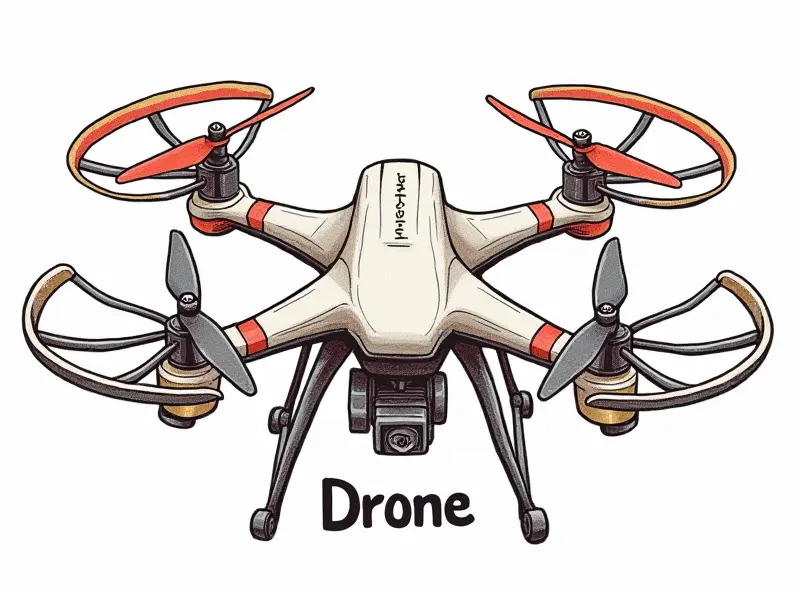How fast quadcopter?

How Fast Can RC Quadcopters Really Fly?
The world of remote control (RC) quadcopters is rapidly evolving, with advancements in technology pushing the boundaries of what these flying machines can achieve. One of the most intriguing aspects of quadcopter performance is their speed capabilities. This article delves into how fast RC quadcopters can really fly and provides insights into achieving maximum speeds.
Top Speed of Modern Quadcopters Revealed
The top speed of modern quadcopters varies widely depending on several factors, including the specific model, design features, and intended use. For instance, a high-performance racing drone might reach speeds exceeding 150 mph (240 km/h), while a more conventional aerial photography drone may have a maximum speed around 60 mph (97 km/h).
Achieving Maximum Speed with Your Quadcopter
Reaching the top speed of your quadcopter requires careful tuning and optimization. Key aspects include:
- Tuning Propellers: Choosing the right propeller size and pitch can significantly impact speed.
- Battery Selection: High-capacity, high-discharge batteries are essential for sustained high-speed performance.
- Motor Efficiency: Upgrading to more powerful motors can provide a substantial boost in speed.
Factors Affecting Quadcopter Flying Speed
A variety of factors influence the flying speed of quadcopters, including:
- Air Density: Higher altitudes and cooler temperatures decrease air density, potentially increasing speed.
- Wind Conditions: Tailwinds can enhance speed, while headwinds have the opposite effect.
- Aerodynamic Design: Sleek designs with minimal drag help achieve higher speeds.
Understanding Quadcopter Speed Ratings and Performance
Quadcopters are often rated based on their maximum speed, flight time, and maneuverability. Understanding these ratings is crucial for selecting the right drone for your needs. For example:
- Speed Rating: Indicates the top speed a quadcopter can achieve under optimal conditions.
- Flight Time: Reflects how long the drone can fly before needing to recharge, often inversely related to speed.
The Science Behind Quadcopter Top Speeds
The physics of flight dictate that quadcopters achieve their top speeds through a balance between thrust and drag. Thrust is generated by rotating propellers, while drag is the resistance encountered from air movement. Optimizing these forces allows for maximum speed.
Thrust Dynamics
Increasing motor power and adjusting propeller pitch can enhance thrust, thereby boosting top speeds. However, this must be balanced to avoid compromising stability and control.
Aerodynamics
Sleek designs with streamlined bodies reduce drag, allowing for faster flight. Aerodynamic efficiency is critical in achieving the highest possible speeds.
Unleashing the Speed Potential of Quadcopters
To unlock the full speed potential of your quadcopter, consider:
- Tuning Flight Control Systems: Fine-tuning PID settings can optimize responsiveness and stability at high speeds.
- Leveraging Lightweight Materials: Using carbon fiber or other lightweight materials reduces overall weight, enhancing speed capabilities.
Breaking Down Quadcopter Maximum Flight Speeds
The maximum flight speed of a quadcopter is determined by multiple interrelated factors. By understanding these elements and optimizing them through careful tuning and component upgrades, you can maximize the performance of your drone.
Motor Power and Efficiency
High-performance motors with efficient power delivery are essential for achieving high speeds. Upgrading to better motors often provides a significant boost in top speed.
Battery Capacity and Discharge Rate
Adequate battery capacity combined with high discharge rates ensures sustained performance at maximum speed without premature voltage drops or overheating issues.
What Determines a Quadcopter's Top Speed?
The primary determinants of a quadcopter’s top speed include:
- Motor and Propeller Configuration: The combination of motor power, propeller size, and pitch directly influences speed.
- Airframe Design: Aerodynamic efficiency is crucial for minimizing drag and maximizing thrust-to-drag ratio.
FPV Drone Racing: Pushing Speed Boundaries
First-person view (FPV) drone racing pushes the limits of quadcopter speed. Competitors often use highly customized drones designed specifically for high-speed performance, pushing the boundaries of what is possible in terms of top speeds.
Fastest RC Quadcopters in 2025 Revealed
The latest advancements in technology have led to some impressive quadcopter models with remarkable speed capabilities. Here are a few examples:
- Racing Drones: Models such as the Emax QX Series and BetaFPV Vortex can exceed 150 mph (240 km/h).
- Aerial Photography Drones: While not designed for top speeds, models like the DJI Mavic Air 2 still offer respectable performance around 60-70 mph (96-113 km/h).
Conclusion
The quest to achieve maximum speed in RC quadcopters is an exciting frontier in drone technology. By understanding the science behind top speeds, optimizing components, and leveraging advanced designs, enthusiasts can unlock incredible performance from their drones. Whether for racing or aerial photography, pushing the boundaries of speed opens up new possibilities and experiences.

